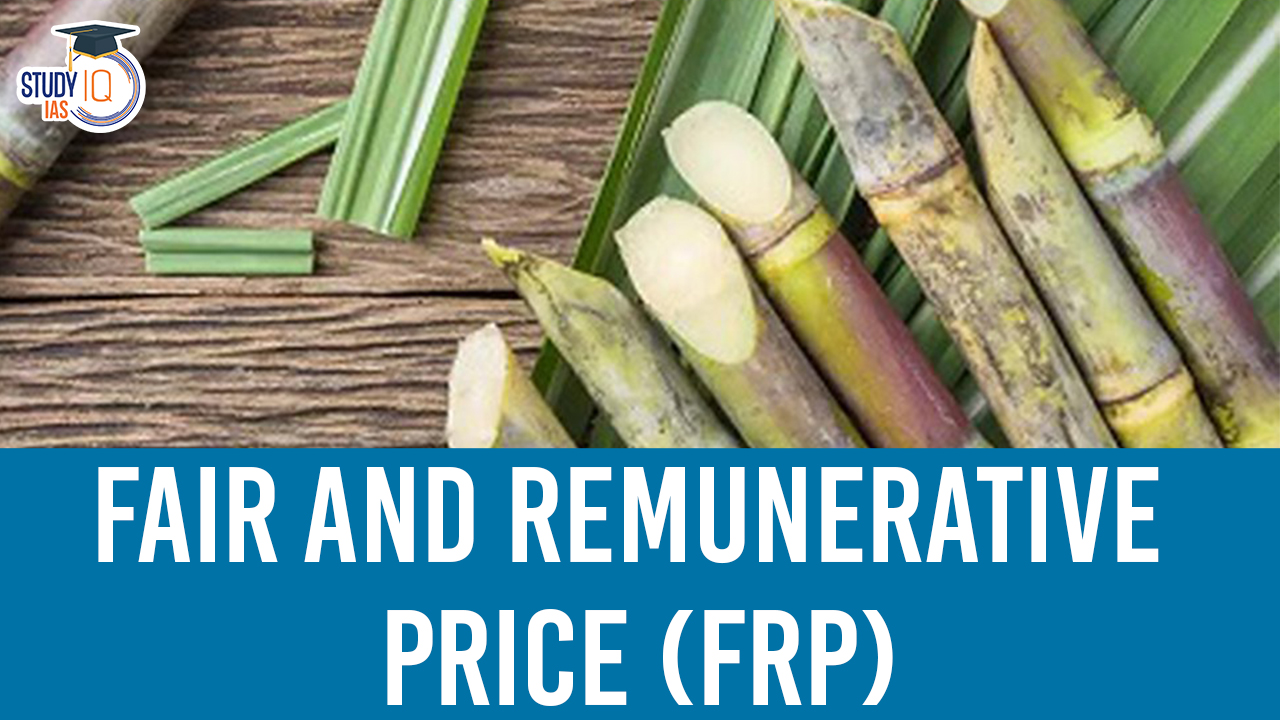Table of Contents
Fair and Remunerative Price (FRP)
The recent issuance of a government resolution by the Maharashtra Government regarding sugar payment methods has sparked debates and protests among farmers in the state. The resolution proposes changes in the Fair and Remunerative Price (FRP) payment system, aiming to alter the installment structure and tie payments to the current season’s recovery. This move has raised concerns among farmers about its potential impact on their incomes and financial stability. To comprehend the implications of this resolution, it’s crucial to delve into the intricacies of FRP, its significance for farmers, and the dynamics of the sugarcane industry.
Fair and Remunerative Price (FRP) Overview
| Aspect | Description |
| Definition | Price mandated by the government for sugar mills to pay to farmers for cane procurement. |
| Payment Structure | Two-tranche system:
|
| Dependency | Previously reliant on last season’s FRP. Now tied to the current season’s recovery rates. |
| Factors Considered | Cost of production returns from alternative crops, sugar availability, recovery rates, by-product realization, risk and profit margins for growers. |
| Payment Timing | Instalments may not align with traditional lump sum payments at season start, impacting financial planning. |
| Farmers’ Concerns | Income instability, loan repayment challenges, and risk factors introduced by variability in FRP payments. |
| Regulatory Framework | Governed by the Sugarcane Control Order, 1966 under the Essential Commodities Act (ECA), recommendations by CACP, and approval by CCEA. |
| Implications | Crucial for farmers’ livelihoods and sugarcane industry sustainability; impacts income and financial stability. |
| Importance | Supports sugarcane farmers, ensures fair compensation, influences industry dynamics and farmer welfare. |
We’re now on WhatsApp. Click to Join
Government Resolution On Fair and Remunerative Price (FRP)
The new resolution introduced by the Maharashtra Government modifies the payment structure for FRP in two significant ways:
- Two-Tranche Payment: Sugar mills are now permitted to pay FRP in two instalments. The first instalment, based on the average recovery of the district, is due within 14 days of cane delivery. The second installment, calculated after the closure of the mill, incorporates final recovery data including sugar and ethanol production from molasses and is to be paid within 15 days thereafter.
- Seasonal Recovery Dependency: Unlike the previous system which relied on the previous season’s FRP, the new resolution ties payments to the current season’s recovery rates. This means that farmers’ payments will be contingent upon the actual performance of the sugarcane in the ongoing season.
Farmers’ Concerns and Protests
Farmers in Maharashtra have voiced their discontent with the new payment resolution, citing several concerns:
- Income Instability: The dependency on seasonal recovery rates introduces uncertainty into farmers’ income calculations, potentially impacting their financial stability.
- Timing of Payments: Farmers traditionally rely on a lump sum payment at the beginning of the season to cover expenses and investments for the upcoming crop cycle. The installment-based system may disrupt this financial planning.
- Loan Repayment: Farmers fear that while they are expected to adhere to regular loan repayment schedules and other expenses, the installment-based FRP may not align with their financial obligations.
- Risk Factor: The variability in FRP payments based on seasonal recovery rates adds layer of risk for farmers, potentially affecting their profitability and livelihoods.
Understanding Fair and Remunerative Price (FRP)
FRP is a price mandated by the government that sugar mills are legally obligated to pay to farmers for the cane procured from them. The calculation of FRP takes into account various factors including the cost of production, returns from alternative crops, sugar recovery rates, and reasonable margins for growers.
Factors Considered for Announcing FRP:
- Cost of production
- Return from alternative crops
- Sugar availability and prices
- Recovery of sugar from sugarcane
- Realization from by-products
- Risk and profit margins for growers
Implications of FRP Payment Method
The payment of FRP plays a crucial role in the livelihoods of sugarcane farmers and the overall sustainability of the sugarcane industry. By transitioning to a two-tranche payment system tied to seasonal recovery rates, the Maharashtra Government aims to align FRP payments with current industry dynamics. However, the implementation of this resolution raises valid concerns about its impact on farmers’ incomes, financial stability, and overall welfare.
Conclusion
The government resolution regarding the payment of FRP in Maharashtra reflects an attempt to adapt to changing industry dynamics and ensure fair compensation for sugarcane farmers. However, the concerns raised by farmers underscore the complexity of implementing such changes and the importance of considering farmers’ livelihoods in policy decisions. Moving forward, policymakers need to engage with stakeholders and address these concerns to achieve a balanced approach that supports both the sustainability of the sugarcane industry and the welfare of farmers.


 Growth in Gold Loans and NPAs, Reasons a...
Growth in Gold Loans and NPAs, Reasons a...
 How RBI Responded To Global Trade War Ch...
How RBI Responded To Global Trade War Ch...
 Why Confidence in US Dollar is Falling?
Why Confidence in US Dollar is Falling?





















